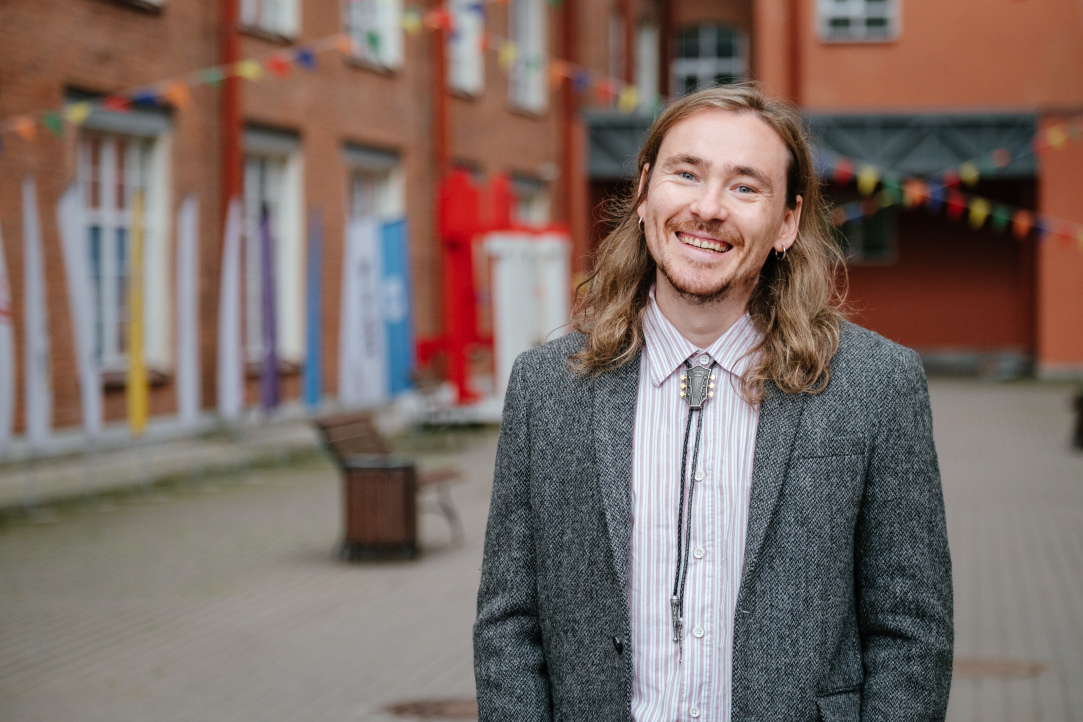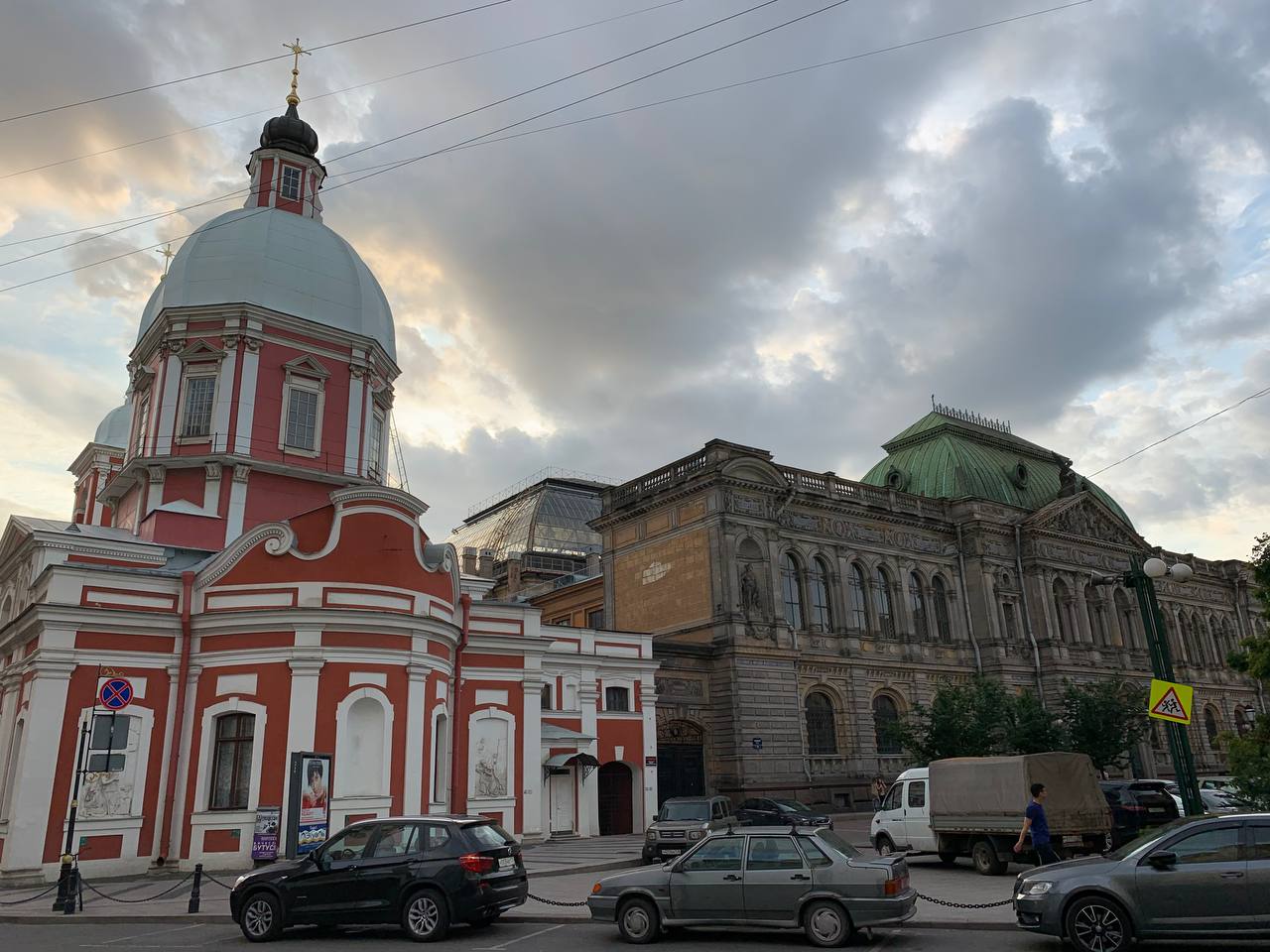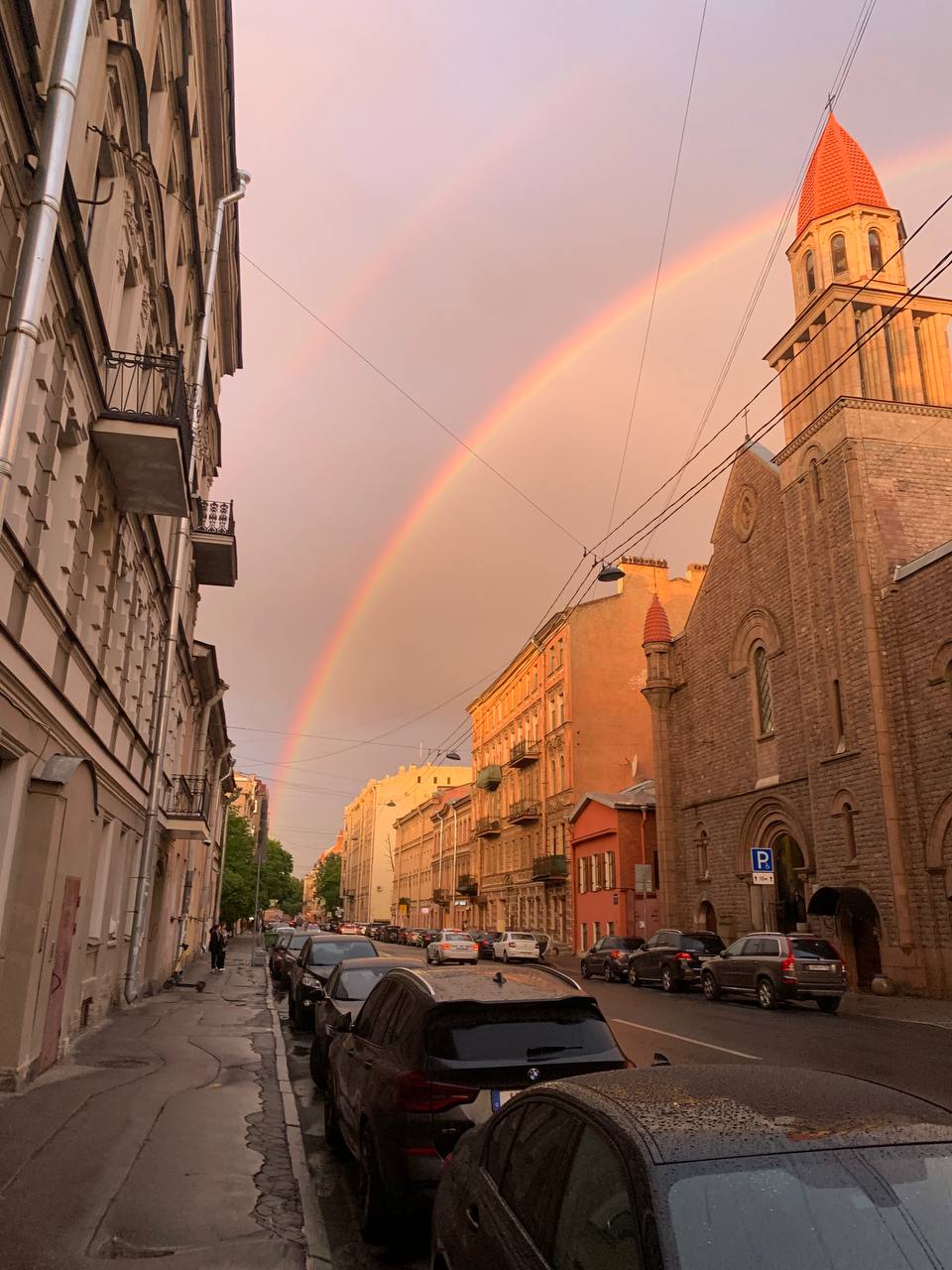'City Legends': Historian Igor Kuziner on His Favourite Places in St Petersburg
Meet Igor Kuziner, a native Petersburger and a Senior Lecturer of the Department of History. Having left his engineering career, he started studying Old Believers-wanderers and received a PhD degree. Together with the researcher, you will go on an excursion around an Old-believers' cemetery in St Petersburg, get into the attics at Prospekt Stachek and find the remains of a Protestant church in the village Zaozerye. Read about all these things in the article.

A Place That Inspired Research
For me, it was quite the opposite: it wasn't a place that inspired my research but the research started suggesting the places indirectly related to it. As I study Old Believers-wanderers, I will name the Gromovskoye Old-believers' cemetery near the Baltiysky railway station. Now, it is hard to see this place from the road: the church was demolished back in the Soviet times. However, there are still a chapel and ruined tombs of rich Old Believers—for instance, the merchants Gromovs, rich St Petersburg Old Believers and owners of the forest exchange.
For a long time, there has been a cultural centre of the Old Believers in the Gromovskoye cemetery. Not the radical nonconformists which I study but those who were integrated into the merchant networks. Why here? It happened so that the St Petersburg Old Believers followed the Moscow ones. In Moscow, the intellectual bases of the Old Believers were located exactly on cemeteries—the Rogozhskoe and Preobrazhenskoe. These are the places where their churches also appeared. Until the 18th century, the Old Believers were not allowed to build churches within the city limits. But at the end of the 18th century, the epidemic of smallpox started in Russia, and it coincided with indulgence in religious policy. On these epidemic cemeteries, the first churches of the Old Believers started to appear, and they united like-minded people. The logic was as follows: smallpox cemeteries themselves were considered marginal, and no policeman would come there. So they could freely gather. This is how the Old Believer's communities started to appear closer to the outskirts. The Gromovskoye cemetery has a similar story: now, it is almost in the centre but in the 19th century, it was on the outskirts, far from the eyes.
The Old Believer's cemeteries are different from the usual ones in appearance. The crosses faced another side, and above them was a 'golbets'—a thing that looks like a house. However, over the last hundred years, these borders got a little blurred... now, golbetses are made above common crosses, and the graves have faced different sides for a long time. In addition, in the Soviet period, they started to bury those who did not share the same religion in the Old Believer's cemetery.
My Favourite Building in St Petersburg
I rather like some districts—but my preferences depend on my mood and the purpose of my walk. If I want a beautiful view, I go to Solyanoy Lane. Near 'Fly' (the Academy named after Baron Alexander von Stieglitz—editor's note), there are wonderful tables. There, you can wait for your friends and go to Nekrasova Street together. The best place to see sunsets is the slope near the Fontanka River which is located on the other side of the Fountain House.

I have a long history with Narvskaya. According to my first education, I am an engineer, and I managed to work in the speciality: to lay Internet cables in the houses at Prospekt Stachek. So if you have problems with your Internet connection, note that I am a worse engineer than a historian! Before laying the cable, we had to inspect the facility so I regularly climbed the local roofs and attics. Around that time, this place struck a chord in me. I became fond of walking around there though it was easy to get lost.
In the Narvskaya district, there is a lot of mainstream constructivism, a vivid example is the cinema 'Progress'. But I have always loved the streets parallel to Prospekt Stachek where there are fewer buildings like this. I have quite pleasant memories of these places: for instance, I roamed about there when I enrolled in a PhD programme at HSE University. The HSE building at Promyshlennaya Street remains very meaningful to me though it is hard to hang out near it for a long time.
I also like the Elizarovskaya district—in childhood, my academic year regularly started with purchasing school bags, notebooks and textbooks at a book fair in the Cultural Centre named after Krupskaya. Later, I was looking for books only there—before I started reading e-books.
Besides, in this district, there is a nice descent to the water where I celebrated my wedding. A quiet place with a special atmosphere. You won't see faceless crowds of hipsters in the same clothes on this descent for sure. I don't want to talk badly about new places like 'Sevkabel Port' as there are also gems like the bar 'Masts' where my friend works as an art director. But the port does not have a soul.. Just like me because I am a hipster as well.
A Place I'd Like to Tell Everyone About
Earlier, I did not only talk about St Petersburg but also actively showed it to the foreigners who stayed at my place via couchsurfing. Everything depended on a person's requests. Once, I hosted a Norwegian who was absolutely indifferent to museums and sights. He said: 'I'll do what you do for the whole week'. As a result, we went to Strelna with him, tidied up the grave of my grandmother, fixed the sink in my summer house and went to some bars...
Another time, I hosted an Iranian couple who, on the opposite, wanted all the mainstream things. I took them to a restaurant with Slavic cuisine where women in traditional gowns brought them homemade vodka and sandwiches with lard. For people who have never been to Eastern Europe, it is an amazing experience! By the way, with these Iranians, I went on a boat trip along St Petersburg rivers and canals for the first time: I covered myself with a blanket and enjoyed the sunset. Of course, I did not listen closely to the excursion—otherwise, I would start arguing and clarifying something...
Every traveller should visit the Sennoy Market. It is one of the most unglamorous and unvarnished places in St Petersburg but buying fruits here is just the thing. Sometimes, you have to argue with the salesmen so that they don't sell you any rot. But if you are not greedy and do not chase cheap fruits for 20 rubles, you can find quite good ones for 40.
As a researcher of the religious landscape, I would recommend visiting the Feodorovskaya Icon Cathedral near the Moskovsky railway station. A perfect place for the first meeting with the Orthodox faith. You don't have to cover your head with a scarf and can sit if you are tired—very friendly! Besides, the local priests speak English very well. Another option is to visit churches of various religious denominations located at Nevsky Prospekt. And there are a lot of them—it's not for nothing Alexandre Dumas called this street 'the avenue of religious tolerance'. At first, you can go to Petrikirche, then—the Catholic Church of St Catherine, and then, slowly walk from there to Our Lady of Lourdes Church at Kovensky Lane. But the best thing is to follow this route on Christmas Eve according to the Gregorian calendar, we have done it with my students. Everyone sings songs, plays scenes, offers non-alcoholic mulled wine and really hopes that you would stay to celebrate with them!

A Place I Want to Keep Secret
First of all, Petrogradka—on different sides of Bolshoy Prospekt. In the Pushkarsky Garden at Voskova Street, there is a chapel built at the place of appearance of Saint Mary. At Lakhtinskaya Street, Xenia the Blessed lived once: from here, she carried the bricks to the chapel she was building on Vasilevsky Island.
Another thing that comes to my mind is Repina Street on Vasilevsky Island—the narrowest street in St Petersburg. It is very quiet and paved with stone which is why it reminds me of Vyborg a lot. However, this street has a sad and dark past: in winter, during the first years of the Leningrad blockade, there was a morgue under the open sky.
In general, in the Soviet period, the city was less centralised than now. 'Petrogradka' and 'Vaska' were much more popular and their Bolshoy Avenues definitely corresponded to their names (Bolshoy means 'big' in Russian—translator's note). Life wasn't built around only Nevsky Prospekt. But in the 00s, St Petersburg faced the cultural and restaurant clamour, so these places became secondary. The most interesting places opened closer to Nevsky Prospekt, the signs at 'Petrogradka' and 'Vaska' often changed, the public places and shops did not stay for long, and there were a lot of communal apartments... And now, I can see again how life comes back to these places. The new centres appear, and that's amazing!
The Place with My Interesting History
There are several of them. First of all, the Chapel of Xenia the Blessed at the Smolenskoe cemetery. It is a place of attraction for many people as there, they can ask Xenia the Blessed for help. Once I did it myself. After the bachelor's degree, I couldn't get a job, and my grandmother said: 'Go to Xenia, leave a note for her'. And it happened—I found the job really quickly.
I have a slightly creepy personal story about the building of the university named after Bonch-Buryevich at Moika. In my early student years, I worked there part-time as a security guard and after the night walk on Nevsky Prospekt asked my acquaintance to let me in there to wait till the metro opens. I went upstairs, locked myself in one of the study rooms and had a nap. After some time, I woke up because of the piano noises... I do not know where they came from. There was only one piano in the building, and it was located far away—in the events hall.
For some reason, I remembered the story about Malookhtinsky Old-Believers' cemetery. At the beginning of the 20th century, the Khlyst Daria Vasileva who declared herself to be 'Saint Mary' preached here. A lot of people came to bow down to her: they were Khlysts themselves and those who were fond of the esoteric like the writer Mikhail Prishvin. The latter wrote in his memoirs that during these meetings, people almost drank blood. But it is, of course, nonsense.
My Favourite Place in the Leningrad Region
First of all, it is the village of Maloe Raikovo where I used to spend every summer vacation until I was about 20 years old. It seems like an ordinary unremarkable village but through it, you can track the history of the 20th century. My students and I created a project and started collecting information about what was happening there in the last 150 years in archives. This village went through everything: the demolition of the local church, repressions, military occupation... It's a pity there is no one to question about this place. The oldest citizen of this village is my father. He is 84 now, and he is not the most reliable source of information about the history of this place.
In the Kingisepp District, there are two splendid deserted mansions. The first one is the mansion of the Albrechtov in Kotly, and the second—Uteshenie—is made in the English style with decorations just like in the films about Sherlock Holmes. You can get there only on your own.
I have always been interested in the Finnish population of the Leningrad region. I will sound romantic but for me, it is something like Atlantis. It is a long bygone epoch but looking for its traces is extremely exciting. Once, I found out that there had been a big Protestant church near my native village in Zaozerye and went to look for it. I asked the locals but no one could tell me where it was. And then, I saw a small grove... Looked closely and saw grave crosses which were very simple, made of two metal plates. The surnames were all Finnish. I went further and saw that there was only a row of bricks left of the Protestant church.
What I Hate About St Petersburg
A bad restoration. I am not a misoneist, I don't care about 'Lakhta Centre'. In my opinion, it looks good just like the new building of the Mariinsky Theatre and many others. But I do not like when old houses are renovated with cheap materials or, quite the opposite, they build new ones but try to fake the old style—at Baskoviy Lane, there is such a house in the Russian style. I believe that it is better not to renovate a building at all than to do it badly or demolish it and build something made of glass in its place.
What I Love About St Petersburg
When I lived for some time—even though short—in Moscow, I realised that people lived there for success—financial, family or personal. There, life has a certain linearity: tomorrow, you have to be better than yesterday—in your salary, position, everything. Moreover, you have to maintain your status regularly: eat in certain restaurants, buy clothes in certain shops... But in St Petersburg, you can stay a fool or a freak for your whole life, and no one will say anything to you.
It seems to me that in St Petersburg, there are other categories of success. Until the end of your life, you can study the Coptic language, be a freelance correspondent for 'Fontanka', engage in the history of the Old Believers and still be considered an interesting person. You can literally come to the bar 'Khroniki' and meet your acquaintance who will tell their friends: 'This is Igor, he studies the Old Believers!' And you hear the response: 'Wow, Old Believers, that's amazing!' How much you get paid doing that is not important, no one pays attention to it.
Metro Station 'Narvskaya' or Metro Station 'Sportivnaya'?
In fact, I have been to all St Petersburg metro stations as once, I worked for the metro. I even have some favourites—'Volkovskaya', 'Zvenigorodskaya' and 'Obvodny Canal'. I like 'Volkovskaya' for its panel with the countryside landscape—there is a quite funny cat depicted. But if I have to choose between 'Sportivnaya' and 'Narvskaya', then in summer—'Sportivnaya', and in winter—'Narvskaya'.
In the area of the new 'Sportivnaya', you can sit on the descent with the view of the Tuchkov Bridge and the Petrovsky Stadium—I was there once when the football club 'Tosno' played in the Premier League. I think that only 20 people gathered to support that team...
As for 'Narvskaya', firstly, the station itself is very old just like all the stations of the red line from 'Ploshchad Vosstaniya' to 'Avtovo'. These stations were first in St Petersburg, they were built back in Stalin's time though were opened only after the leader's death. But they have very intense Stalin's vibes—especially, in the service corridors which look like prison basements. Secondly, the Narvskaya district is very flexible in terms of architecture. Stalin's skyscrapers are interspersed there with three-storey yellow houses. If you look at Narvskaya from Prospekt Stachek, it falls on the square like a wave.

